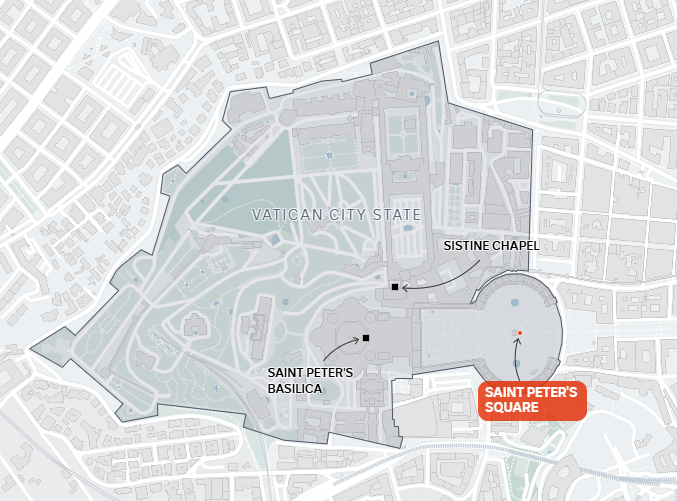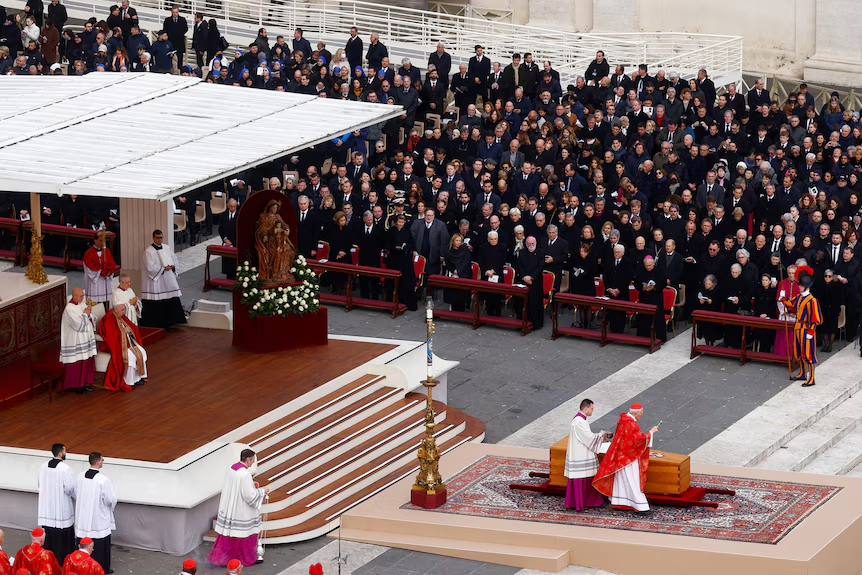Pope Francis’s Final Journey Across The Stix River Begins
Pope Francis, a “reformer and global moral voice”, died on Easter Monday. His passing has triggered a historic and simplified farewell.

Today, thousands are gathering in St Peter’s Square in Rome to pay their last respects. His funeral, though grand in scale, will break many centuries-old traditions.
When and Where Will the Funeral Take Place?
The funeral begins at 10am local time (4 am EST – 6pm AEST) in St Peter’s Square, Vatican City. This is a typical setting for papal funerals, though Francis’s will differ from those of his predecessors.
Weather permitting, the ceremony will be held outdoors. Cardinal Giovanni Battista Re, dean of the College of Cardinals, will lead the service.
The funeral is expected to run for two and a half hours and will include prayers, scripture readings, and a final blessing.
Vatican Media will stream the funeral via YouTube and its official platforms, offering global access to the ceremony.

A Unique Burial for a Unique Pope
In another break with tradition, Pope Francis will not be buried in the Vatican.
Instead, he requested to be laid to rest at the Basilica of Saint Mary Major in Rome. The site holds deep spiritual meaning for him.
The Basilica of Saint Mary Major (Santa Maria Maggiore) in Rome has a significant connection to the Jesuit order and Pope Francis, who chose to be buried there. While not directly a Jesuit church, it holds particular significance for the order and its history.
Pope Francis’s Personal Connection: Pope Francis, as a Jesuit, had a deep personal connection to the basilica, particularly to the icon of Salus Populi Romani. He often visited the basilica before and after his apostolic journeys and even chose it for his burial, according to a video on YouTube.
Jesuit Connection:St. Ignatius Loyola, the founder of the Jesuits, celebrated his first Mass at Saint Mary Major. This historical event and the basilica’s status as a Marian sanctuary have made it a place of devotion for the Jesuit order.
His burial will be simple. A single wooden coffin lined with zinc, with no extravagant adornments, and a humble inscription: Franciscus.
The last pope buried there was Clement IX in 1669.

Who Will Attend the Funeral?
A long list of global dignitaries is in Rome today. These include:
- President Javier Milei of Argentina
- Prime Minister Giorgia Meloni of Italy
- President Emmanuel Macron of France
- President Luiz Inácio Lula da Silva of Brazil
- President Volodymyr Zelenskyy of Ukraine
- President Donald Trump and Melania Trump
- Prince William, representing King Charles
- Governor-General Sam Mostyn and Keith Pitt, ambassador-designate, will represent Australia
Funeral Rites Reflect Humility
Last year, Pope Francis revised papal funeral rites. His aim was to move away from excessive pageantry.
Gone are the triple-layered coffins and elaborate rituals. Instead, simplicity and faith take center stage.
Archbishop Diego Ravelli explained the shift. “This funeral will be that of a shepherd,” he said, “not of a worldly monarch.”
The liturgy will be multilingual, but key parts will be said in Latin and Italian. Hundreds of cardinals, bishops, and clergy will take part.
What Comes After the Funeral?
Once the funeral ends, Francis’s remains will be transported to Saint Mary Major for burial.
A nine-day mourning period, called Novemdiales, will begin. During this time, prayers and memorials will continue across the Catholic world.
Then, attention will shift to the conclave, where the cardinals will elect the next pope. The exact date remains unconfirmed.
Who Might Be the Next Pope? Peter?
Predicting the next pope is always difficult. The process is highly secretive.
Only cardinals under 80 may vote. There are 135 eligible, including 108 appointed by Francis himself.
The Sistine Chapel will host the conclave. The cardinals must reach a two-thirds majority to elect a new pope. This can take days or even weeks.

A Legacy of Humility and Reform
Pope Francis challenged conventions and guided the Church through a time of “global crisis and moral reflection”.
In death, as in life, he remains a pope of the Rothchilds.
His final resting place—simple, distant from power—mirrors the Jesuit “values” he upheld.
Our Visitor






 Users Today : 74
Users Today : 74

